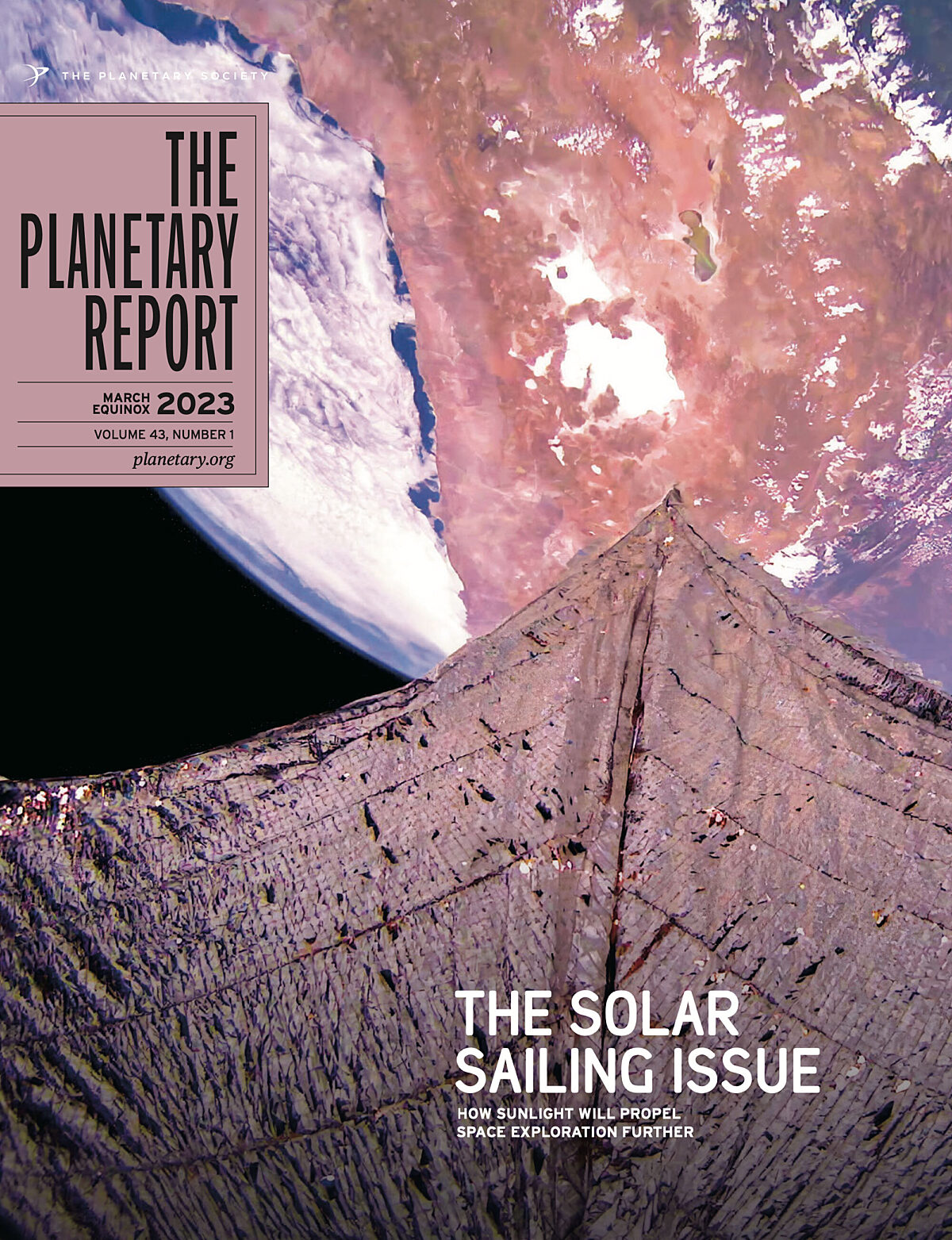
On the Cover: This image taken by The Planetary Society’s LightSail 2 spacecraft on Oct. 24, 2022 was the final image returned from the spacecraft before atmospheric reentry. It shows the central portion of South America centered approximately on Bolivia, including the large white Uyuni Salt Flats.
Download PDF
Features
March Equinox 2023
Harnessing the power of the crowd
The Planetary Society has a long history of helping the public make progress in space exploration.
The future of solar sailing
An exciting future for solar sailing is on the horizon.
Your impact: March equinox 2023
The results of our Best of 2022 awards are in!
Your place in space
Thank you, LightSail: A mission that fulfilled decades of dreaming
By Bill Nye, Planetary Society CEO
It's been a few months now since The Planetary Society’s beloved LightSail 2® burned up in Earth’s atmosphere. We hoped for just one year up there, and our little spacecraft flew for three and a half! It was a huge success. And thanks to the mission team — that includes you, fellow member — LightSail 2’s impact will continue well into the future as we analyze the data and share them with other engineers and scientists in the spacefaring community.
The LightSail program is part of us, part of The Planetary Society. As early as 1976, before the Society was founded, Lou Friedman and Carl Sagan very much wanted to fly an enormous solar sail, almost a kilometer long on each side. Its 10-year objective was to catch up to comet Halley and collect pictures and data up close. I was in Professor Sagan’s class in the spring of 1977 when he talked about this idea enthusiastically. NASA did not choose the comet Halley mission, favoring human spaceflight instead. Decisions like that led Carl, Lou, and Bruce Murray to form the Society and to keep the dream of solar sailing alive.
Years later, around 2001, we had the opportunity to participate in a solar sail mission: Cosmos 1. As you probably know, in 2005, our Cosmos 1 managed to get a ride on a Cold War-era Russian rocket. It never made it to orbit. It’s somewhere at the bottom of the Barents Sea, a region of the Arctic Ocean. But the dream of sailing on sunbeams lived on.
At last, we had enough support to fund an ambitious solar sail spacecraft of our own. It was funded by our members before the word “crowdfund” was even coined. The LightSail program began in 2009, the year before I became executive director (now I’m called the CEO). I often reflect (I guess that’s a photon pun) on my history here. Solar sail missions have been a big part of my job here ever since I became a member of the board of directors in 1997. All this time, through all the ups and downs inherent in developing a completely new technology, we’ve been able to keep working at it thanks to the support of members like you. It really is your mission, and I hope you feel as proud of LightSail 2 — and even its test flight, LightSail 1 — as I do.
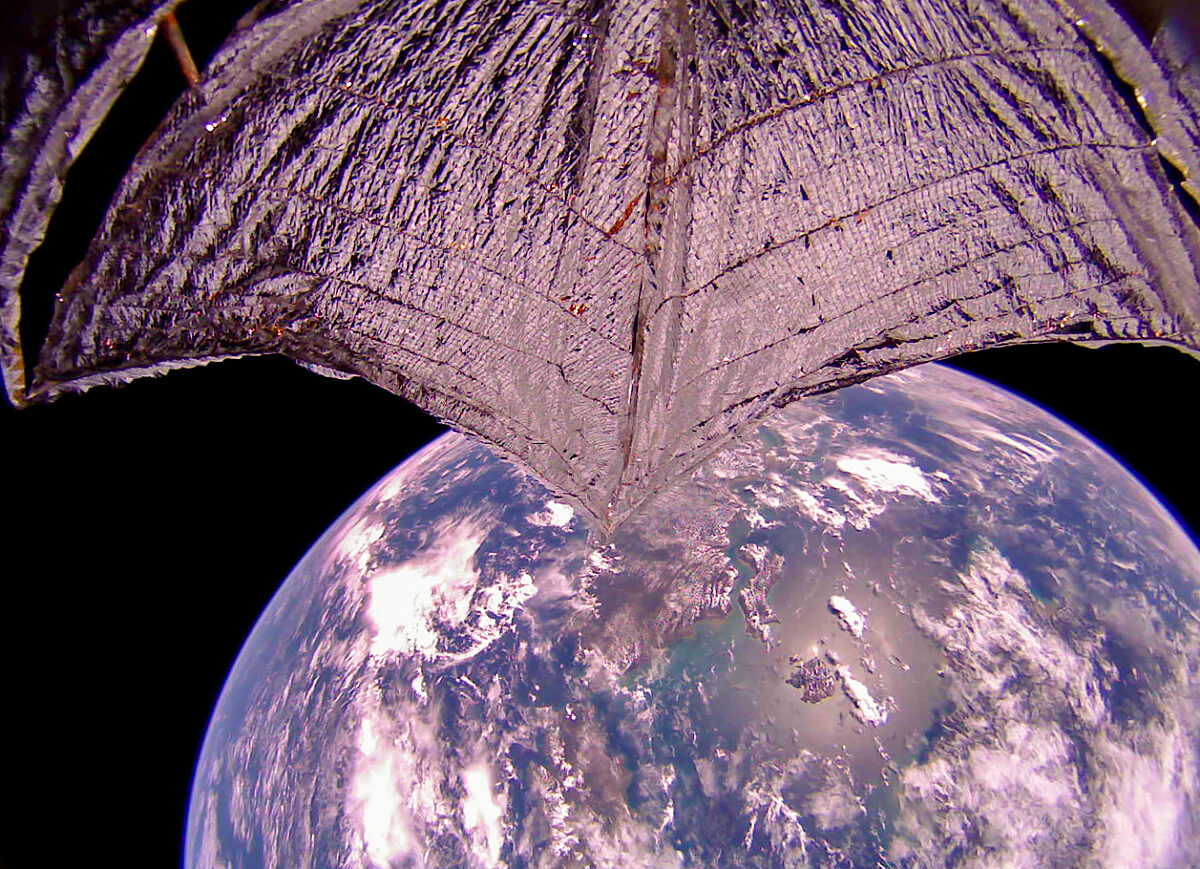
The big question now is: What’s next? Well, LightSail 2 is going to
continue to teach us about solar sailing from beyond its fiery end.
We’ll keep analyzing, sharing, and learning from the data sent down to
Earth by both of our LightSail missions. Rest assured, new solar sailing
missions will build on what LightSail 2 taught us. NASA’s Near-Earth
Asteroid (NEA) Scout mission flew aboard the Artemis I rocket. It made
it to space, but something went wrong. To the NEA Scout mission team, we
say, “Stick with it.” We’ve been there and learned. You will hear more
about this mission and a few other new solar sailing missions in this
issue of The Planetary Report.
Beyond the technical
applications of what LightSail 2 taught us, the success of this
crowdfunded mission shows what’s possible when people who love space
come together to do something big. I can’t say it enough: As a Planetary
Society member, be very proud of your role in the LightSail 2 mission.
Our organization is showing the world that people believe in the value
of space exploration and can come together to make innovative missions
like LightSail happen.
Although this mission’s culmination is
bittersweet, there’s plenty more for us to look forward to. Our STEP
Grants (Science & Technology Empowered by the Public), which you’ll
read about in this issue, continue to fund game-changing science and technology
projects, all thanks to member and donor support. And we’ll continue to
find new projects that give you a front-row seat in the adventure of
exploration and discovery.
Members on deck
Thoughts on LightSail
As we look back on the unprecedented success of LightSail 2, we asked our members to reflect on what it all means. Here is a selection of the amazing — and even poetic — responses we received.
"LightSail is a pioneering idea, and I am delighted with its success! The project knowledge and data contribute toward future projects and goals. I cheer for all who supported this!" — John Jeffrey Drew, USA
"An amazing journey displaying resiliency, dedication, and organisation. Proud to have been part in a tiny way." — Paul Barber, U.K.
"A publicly funded, nongovernment space mission doesn’t happen every day. Projects such as this can open up possibilities that might not see the light of day if left solely to a bureaucracy. Good one, Planetary Society!" — John J. Caito, USA
"Being part of a cutting-edge project, even in a very small way, was amazing. Especially, knowing it was a concept promoted by Dr. Carl Sagan, I’m happy I could contribute to making it happen." — Seetha Sharma, Singapore
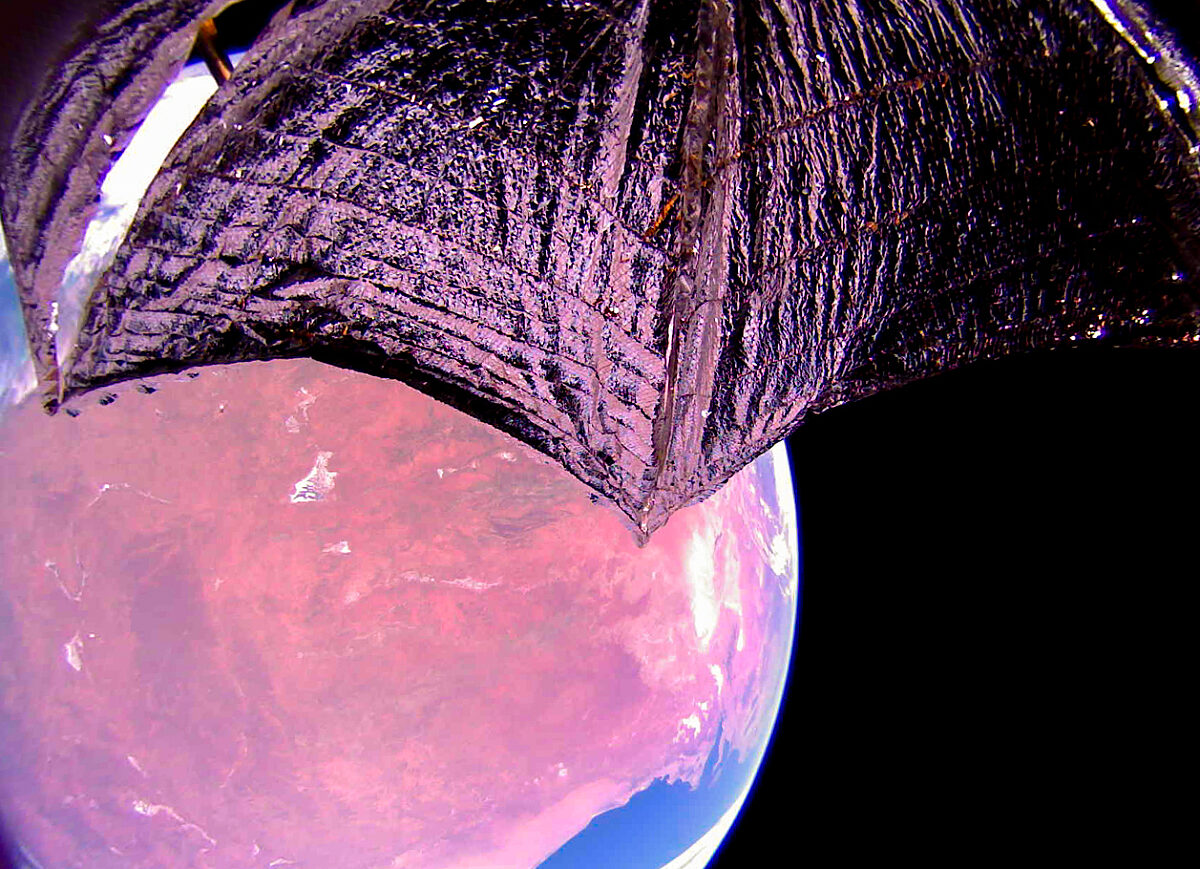
"What an inspirational success story this entire mission has been from start to reentry. During these troubled times in our country and the world, it is too easy to concentrate on issues that divide us. Exploring space has always been an issue that unites us, that reminds us we are all solar sailing on the same little blue marble. Sail on into history, LightSail 2. You are shining a spotlight on what can be accomplished when we all work together. This is not the end; it is just the beginning!" — Donzella Hines, USA
"Amazing to see it actually work and sail. Additionally, the pictures were astounding; remarkable that a niche space society had a camera in orbit taking such photographs. Finally, extremely proud to play a tiny part in such an exceptional scientific endeavour, incredibly well planned, executed, and managed." — Peter Dollery, U.K.
"As an original member of The Planetary Society, I am SO PROUD that this organization has conceived, designed, created, and then put into practical use something that has actually gone into space to introduce new material, travel, and research! We have all hoped to see such a groundbreaking event. I keep thinking how pleased Carl (Sagan) would be. Keep it going, PS!" — Marilyn Marlene Mathis, USA
"We all know space is huge and vast, but the LightSail project made space exploration something I could talk to my family and friends about that was easy to understand and fun to talk about. Proud to be even a small part of the success." — Steve Howard, USA
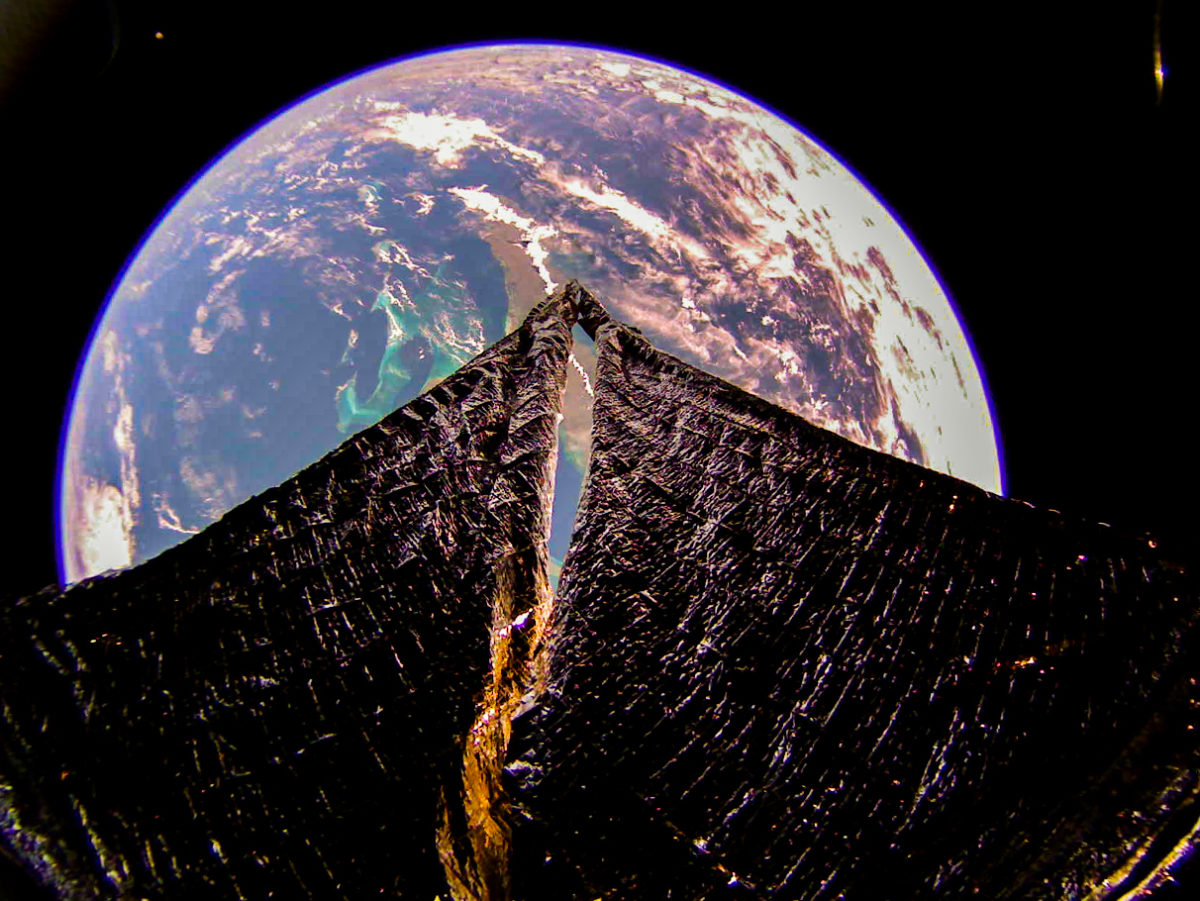
"LIGHTSAIL SUCCESS
We waited breathless to hear the word
Some telemetry from our CubeSat bird.
Our launching to orbit around the world
We learned at last that her sail unfurled.
So finally, again, we heard the tale,
That ancient cry, “Hoist the mainsail,”
It paved the way for our next big try
Around the Earth and away we will fly.
Celebrating success of all our teams
As we surfed away on the sunbeams.
Now a mission has ended with a flash in the pan.
We’ll always remember how the missions began.
So cap this one off with this tiny stanza.
We wait for the next step. What a bonanza!"
— Jay William Preston, USA
"I am a charter member of TPS. Our original logo was a ship sailing into the Solar System. Founder Carl Sagan was a visionary who imagined sailing on light from the very beginning. I’m proud and thrilled that it finally came to pass, its promise demonstrated, and the technology is already being used to further our exploration of space as well as our home planet. We did it! Sail on!" — Dr. Jackie Ericksen, USA
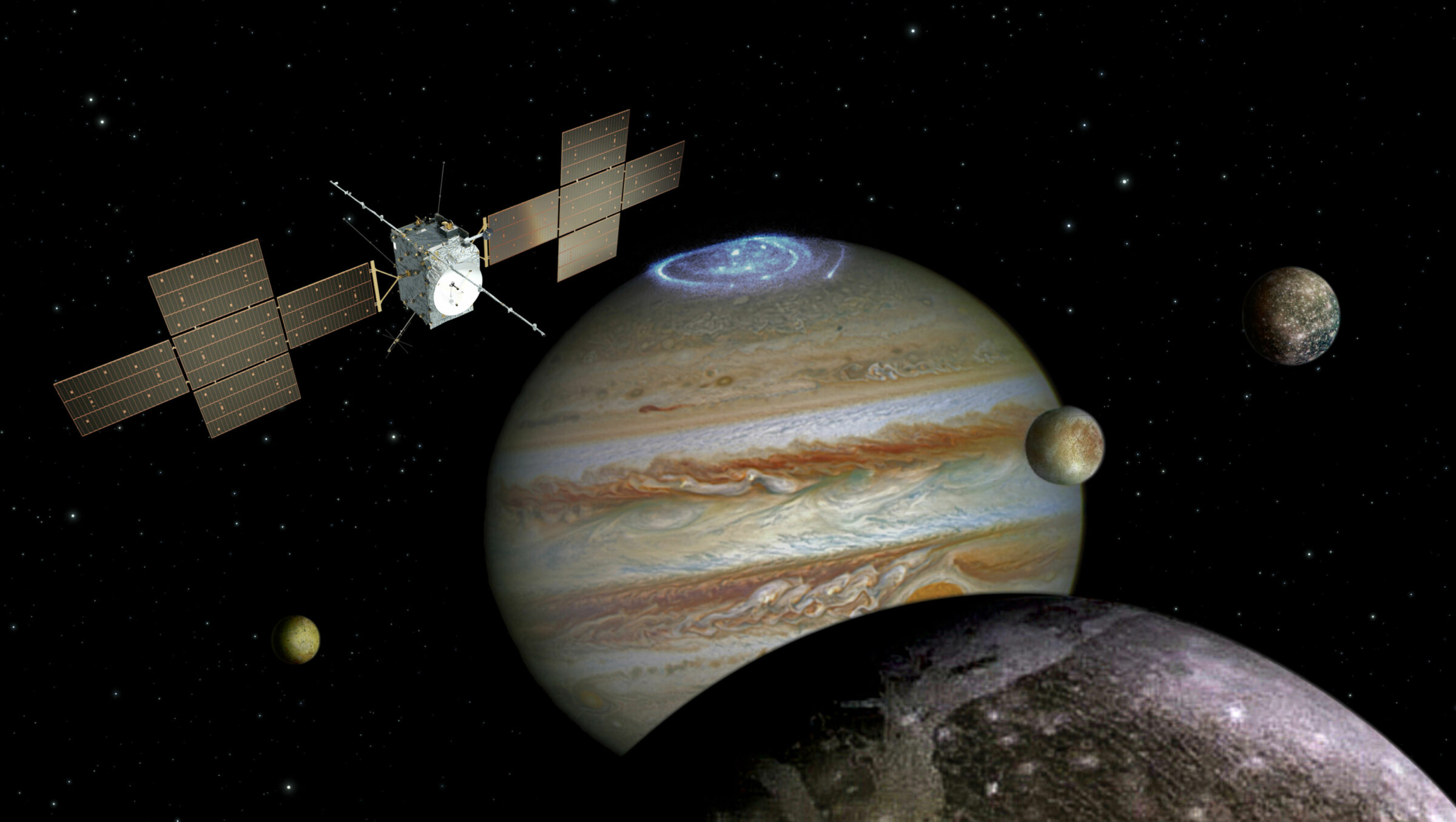
ESA’s JUICE mission launch (April 5-25)
The European Space Agency is sending a spacecraft to investigate Jupiter and its three largest moons: Ganymede, Callisto, and Europa. JUICE, which stands for JUpiter ICy moons Explorer, will look for water beneath the surfaces of these icy worlds and search for signs of life. You can watch JUICE launch at planetary.org/live.
Celebrate the international day of human spaceflight
April 12 marks 62 years since Yuri Gagarin became the first person in space and 42 years since the inaugural launch of the Space Shuttle. This year, celebrate at Yuri’s Night, the world’s biggest space party, hosted by The SpaceKind Foundation. Find a local event near you at yurisnight.net.
What's up?
Hybrid solar eclipse, super-bright Venus
By Bruce Betts, Planetary Society Chief Scientist
In the sky
Super-bright Venus, much brighter than the brightest star in the night sky, dominates the evening west. Reddish Mars is high above Venus in March and will get closer to Venus as the weeks pass. Mars will also dim as time passes as Earth and Mars get farther apart in their orbits. Mercury appears below Venus low to the horizon during April. In March, Saturn is very low to the horizon in the predawn east but will grow higher quickly as the weeks pass. Jupiter will appear low in the predawn east by June. On April 20, there is a hybrid solar eclipse visible across parts of western Australia and portions of Indonesia. A hybrid eclipse appears as a total eclipse in some locations and an annular eclipse in others. For more night sky tips, you can always check out planetary.org/night-sky.
Random space fact
The circumference of the Moon (about 10,900 kilometers, or 6,800 miles) is approximately the same as the flying distance from New York City to Tokyo.
Trivia contest
Our September equinox contest winner is Kathleen MacDougall of San Francisco, California, USA. Congratulations! The question was: Who made the first discovery of a moon of Uranus? The answer: William Herschel discovered Titania and Oberon on the same night about six years after he discovered Uranus.
Try to win a copy of the new book “Solar System Reference for Teens” by Bruce Betts and a Planetary Radio T-shirt by answering this question: Other than on Earth, where in the Solar System is there a feature named Thor?
Email your answer to [email protected] or mail your answer to The Planetary Report, 60 S. Los Robles Ave., Pasadena, CA 91101. Make sure you include the answer and your name, mailing address, and email address (if you have one). By entering this contest, you are authorizing The Planetary Report to publish your name and hometown. Submissions must be received by June 1, 2023. One entry per person. The winner will be chosen in a random drawing from among all the correct entries received. For a weekly dose of What’s Up? complete with humor, a weekly trivia contest, and a range of significant space and science fiction guests, listen to Planetary Radio at planetary.org/radio.
Astronomical art
The heliogyro solar sail
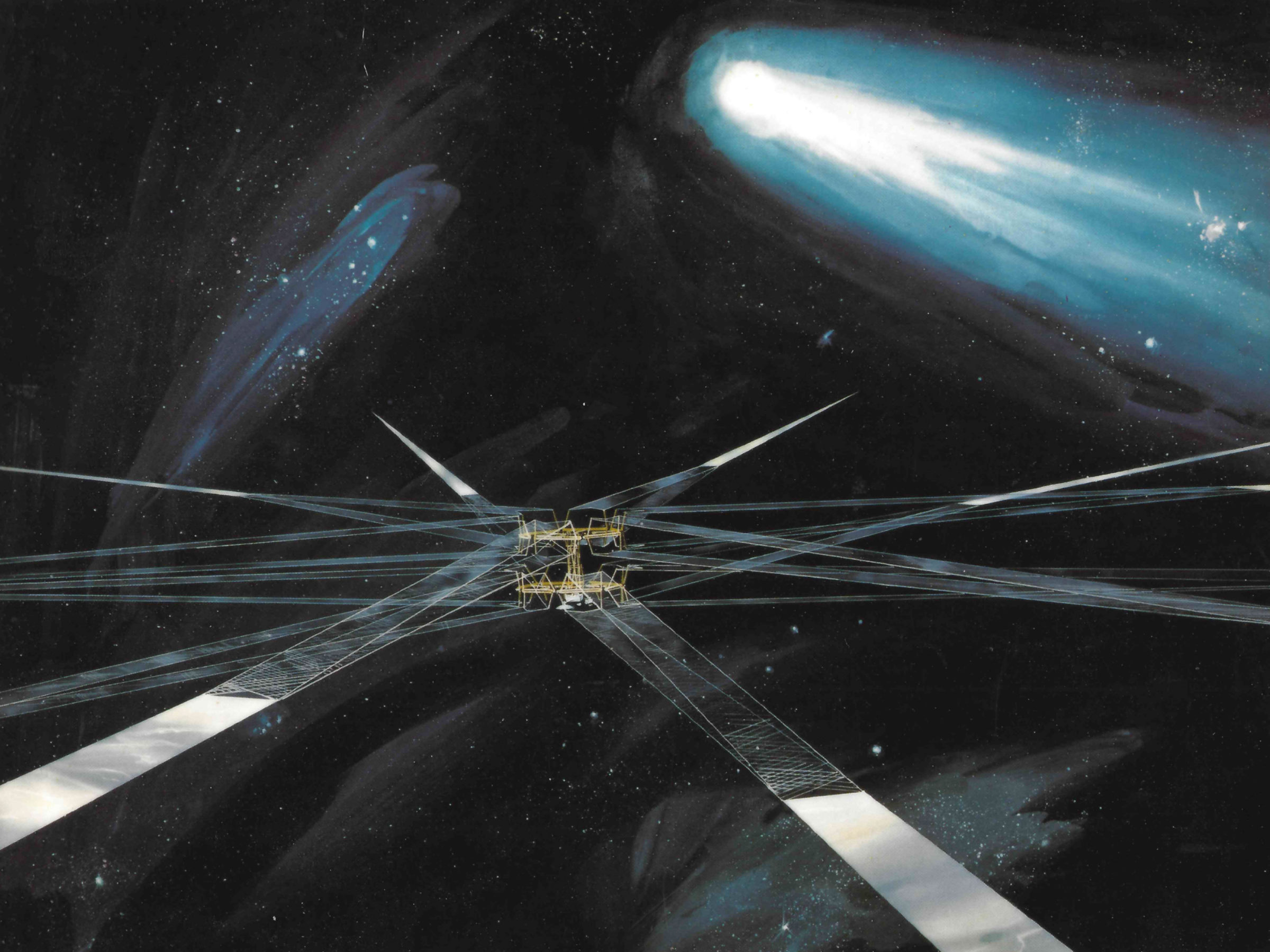
This 1977 space artwork depicts a concept being developed by NASA at the time: the heliogyro solar sail. This enormous spacecraft would have 12 spinning blades, each 4 miles long and composed of lightweight, reflective material like LightSail 2’s Mylar sails. The blades would deploy on reels and spin around a central hub, stiffened by centrifugal forces instead of needing rigid booms. Sunlight would bounce off the blades’ reflective surfaces, propelling the spacecraft. The concept was never realized but remains in the vast realm of possibilities for the future of exploration.
Do you want to see your artwork here? We love to feature our members throughout this magazine. Send your original, space-related artwork to [email protected].
The Planetary Report • March Equinox 2023
Help advance space science and exploration! Become a member of The Planetary Society and you'll receive the full PDF and print versions of The Planetary Report.


 Explore Worlds
Explore Worlds Find Life
Find Life Defend Earth
Defend Earth




